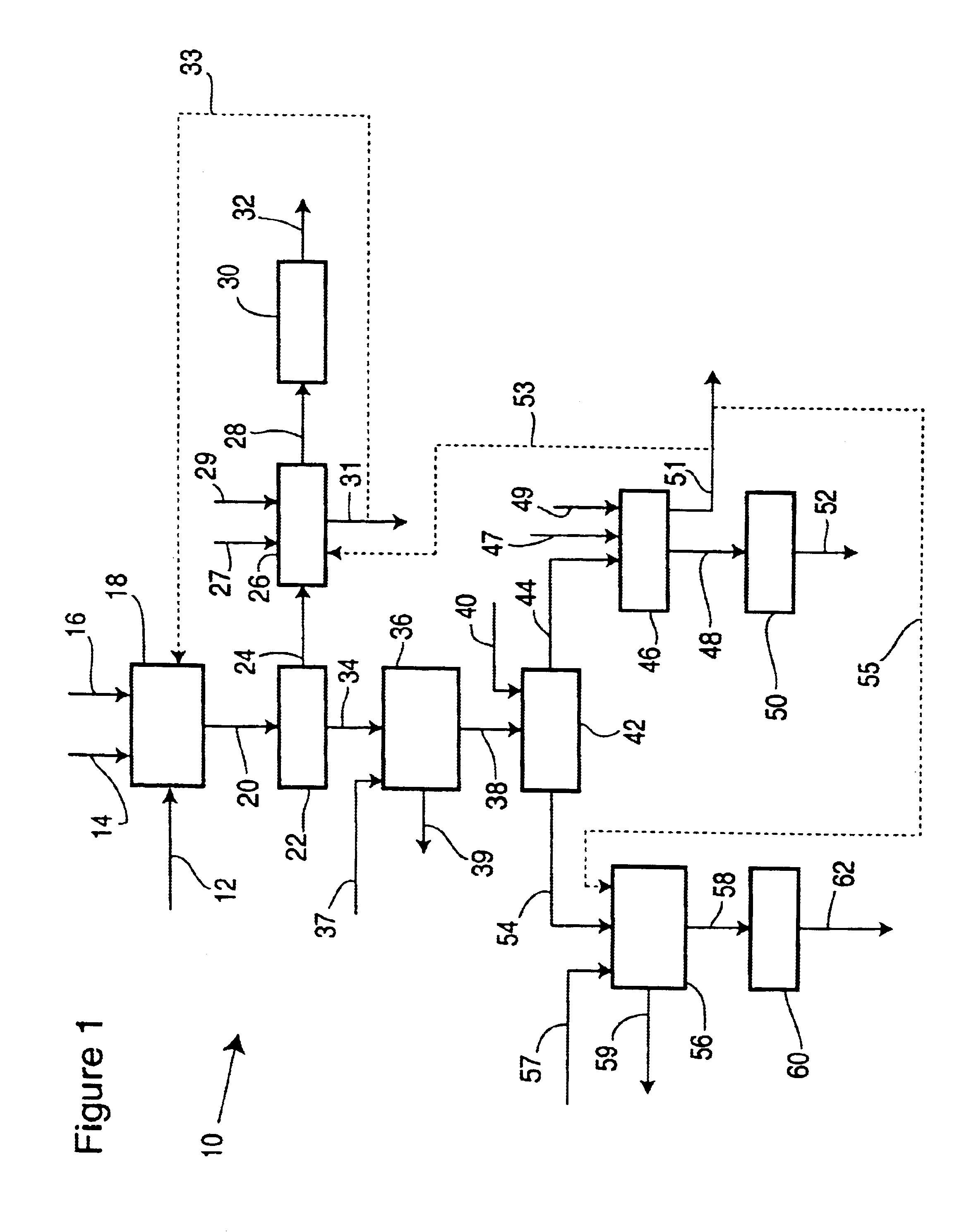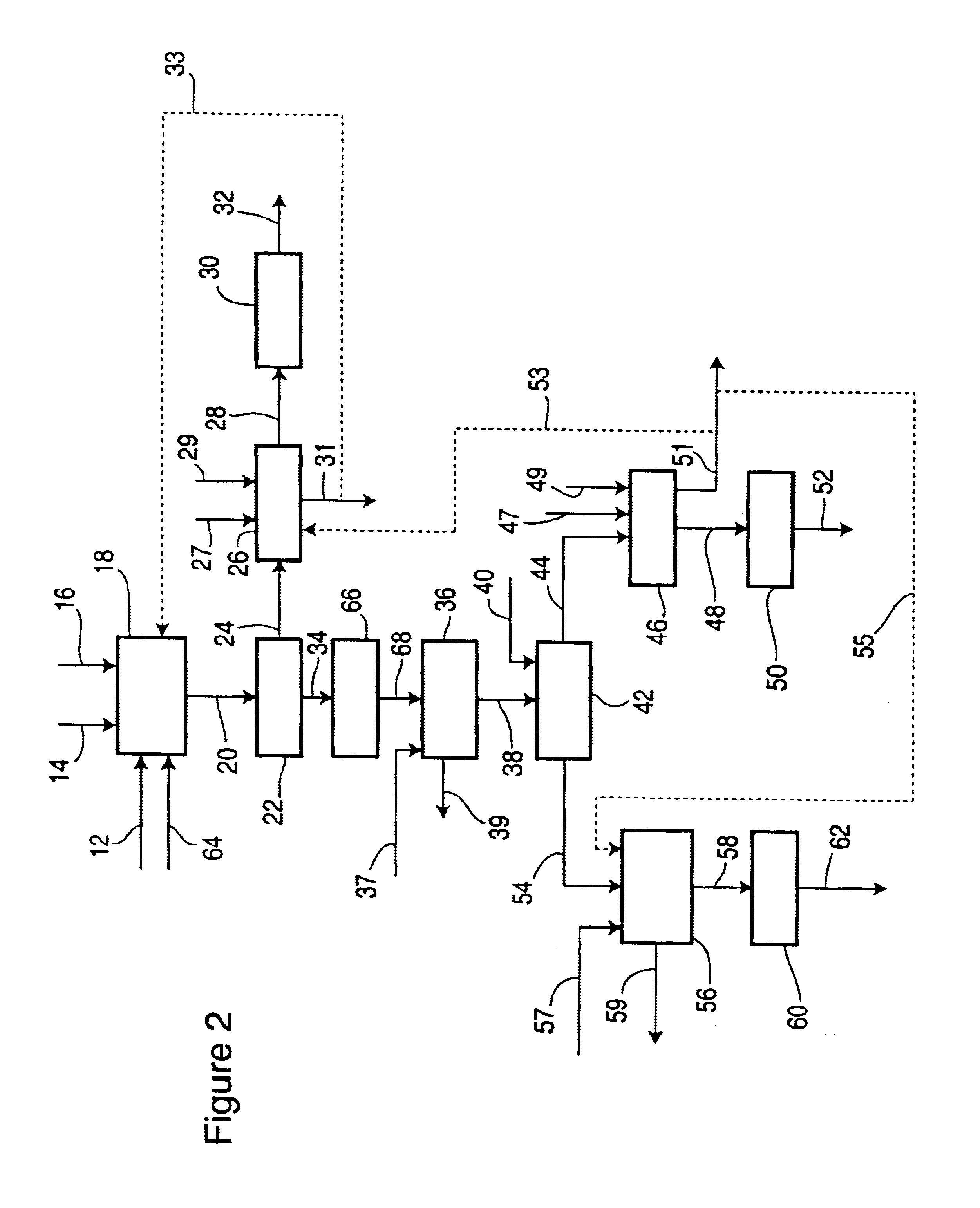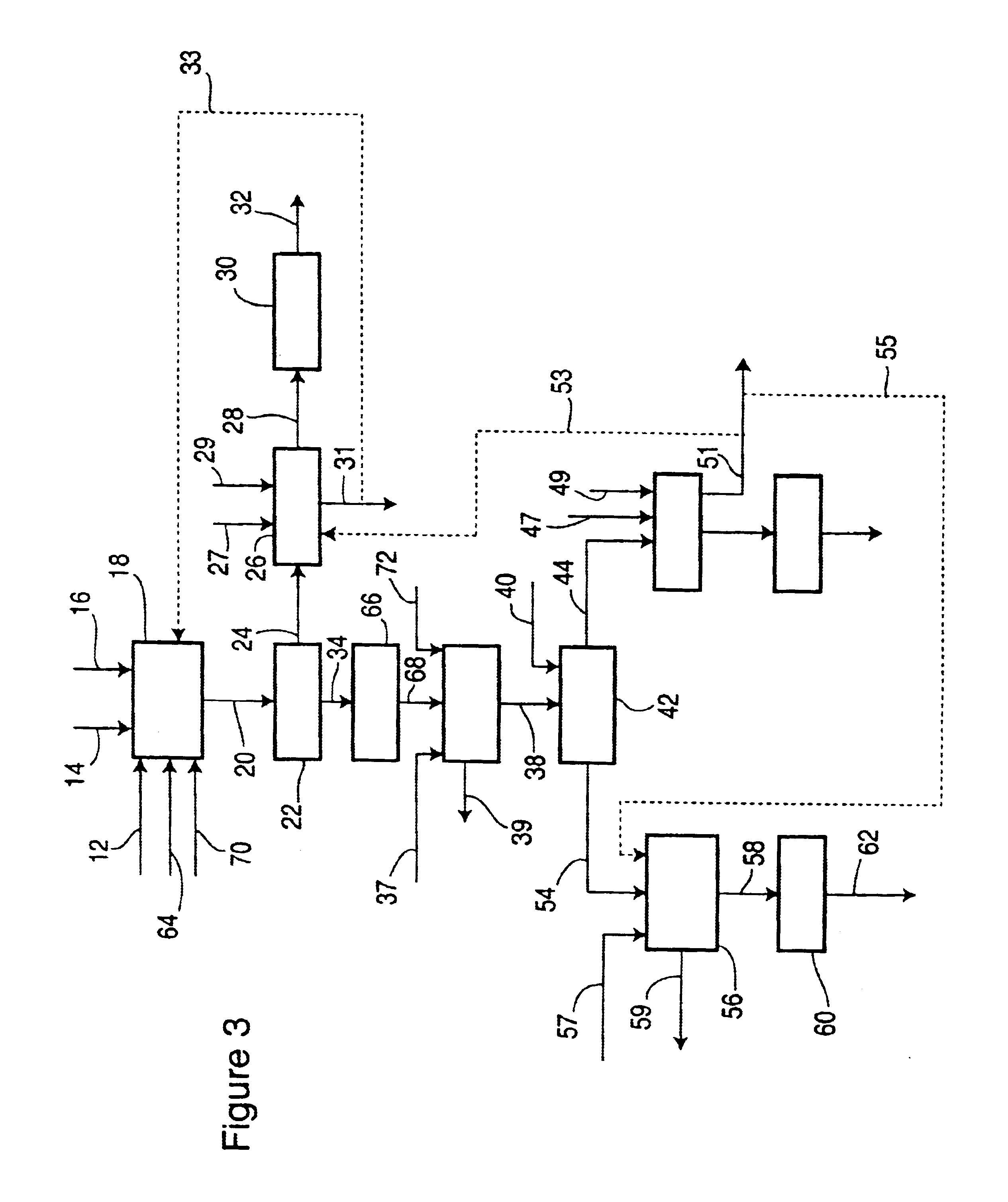Production of high-quality protein isolates from defatted meals of Brassica seeds
a technology of brassica seeds and protein isolates, which is applied in the field of protein products derived from oil seeds, can solve the problems of inability to be used as a protein source of brassica seeds, inability to be metabolized, and unpleasant bitter taste of phenolic compounds in the final protein products,
- Summary
- Abstract
- Description
- Claims
- Application Information
AI Technical Summary
Benefits of technology
Problems solved by technology
Method used
Image
Examples
example 1
[0137]A series of runs were conducted to illustrate the effects of various treatments on the removal of phenolic compounds from the final protein products. Referring now to FIG. 6, a process flow sheet illustrating runs 1-4 of example 1 in accordance with the present invention is shown.
[0138]Run 1 was a control run that did not have a treatment step or a membrane processing step upstream of the isoelectric precipitation step. The protein in 50 g of defatted prepressed canola meal (CanAmera Foods, Hamilton, ON) was extracted by aqueous NaOH at a pH of 12 and a water-meal ratio of 18 for approximately 30 minutes to produce a wet meal residue and an extraction solution. After the extraction, the wet meal residue was separated by centrifugation (6000×g, 15 minutes) with a B-22 centrifuge (International Equipment Company, Needham Heights, Mass.) and the supernatant polished by filtration. The residual solids were washed twice with 6 volume of distilled water. The washing liquids were com...
example 2
[0170]The protein in 50 g hexane-defatted prepressed canola meal was extracted with 900 mL aqueous NaOH (to achieve a solvent-to-meal ratio of 18) at pH 12.0 for 30 minute. The pH was maintained at 12.0 by adding 50% (w / w) NaOH. To reduce the effects of oxidation on the product flavour and colour, Na2SO3 was added to the extraction solution as a reducing agent to a concentration of 0.1% w / v After the extraction, the meal residue was separated by centrifugation (6000×g, 15 minutes), and the supernatant polished by filtration using Whatman No.41 paper. The residual solids were washed twice, each time with 300 mL of distilled water. The washing liquids were combined with the original extract to obtain a total volume of about 1.5 L, to which 4.38 g NaCl and 1.50 g SDS were added resulting in concentrations of 0.3% w / v (0.05 M) and 0.1% w / v respectively. The volume of the extract was reduced by a CF of 3 by ultrafiltration. Diafiltration was then conducted at a DV of 5 with water at pH 1...
example 3
[0174]Hexane-defatted yellow mustard meal with a glucosinolate content of over 200 μmol / g was used as the starting material. The predominant glucosinolate in yellow mustard seed is p-hydroxybenzyl glucosinolate, which is also a principal phenolic component of the seed. The procedure of Example 2 was repeated, with the following changes: each run started with 30 g meal, all the amount of all reagents were reduced proportionally, and no SDS was added to the alkaline extraction solution. After membrane processing, the pH of the alkaline solution was lowered to 4.75 to precipitate the isoelectric proteins, and the acidic protein solution was not treated with insoluble PVP.
[0175]As shown in Table 7, the PPI had a protein content close to 90% while that of SPI was as high as 98%. The treatments employed in the process were effective in removing glucosinolates as well as phytates to below the detection limits of the standard methods of analysis. The overall mass yield of yellow mustard pro...
PUM
| Property | Measurement | Unit |
|---|---|---|
| Fraction | aaaaa | aaaaa |
| Fraction | aaaaa | aaaaa |
| Fraction | aaaaa | aaaaa |
Abstract
Description
Claims
Application Information
 Login to View More
Login to View More - R&D
- Intellectual Property
- Life Sciences
- Materials
- Tech Scout
- Unparalleled Data Quality
- Higher Quality Content
- 60% Fewer Hallucinations
Browse by: Latest US Patents, China's latest patents, Technical Efficacy Thesaurus, Application Domain, Technology Topic, Popular Technical Reports.
© 2025 PatSnap. All rights reserved.Legal|Privacy policy|Modern Slavery Act Transparency Statement|Sitemap|About US| Contact US: help@patsnap.com



